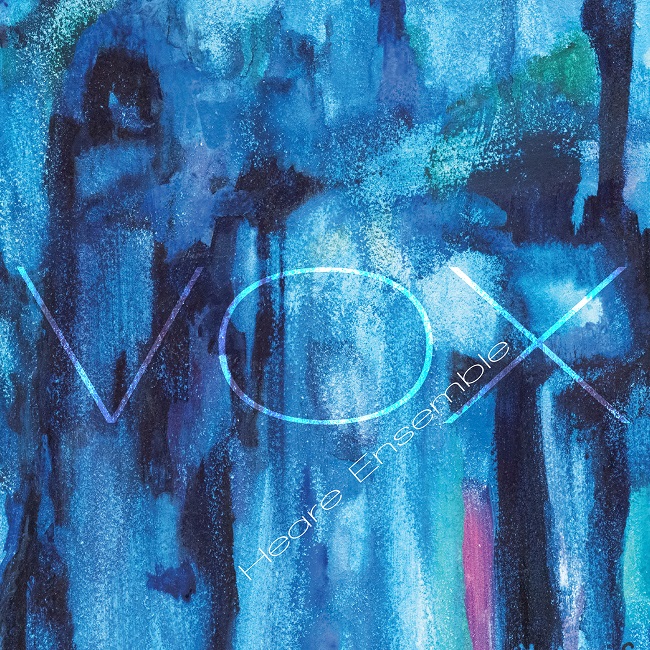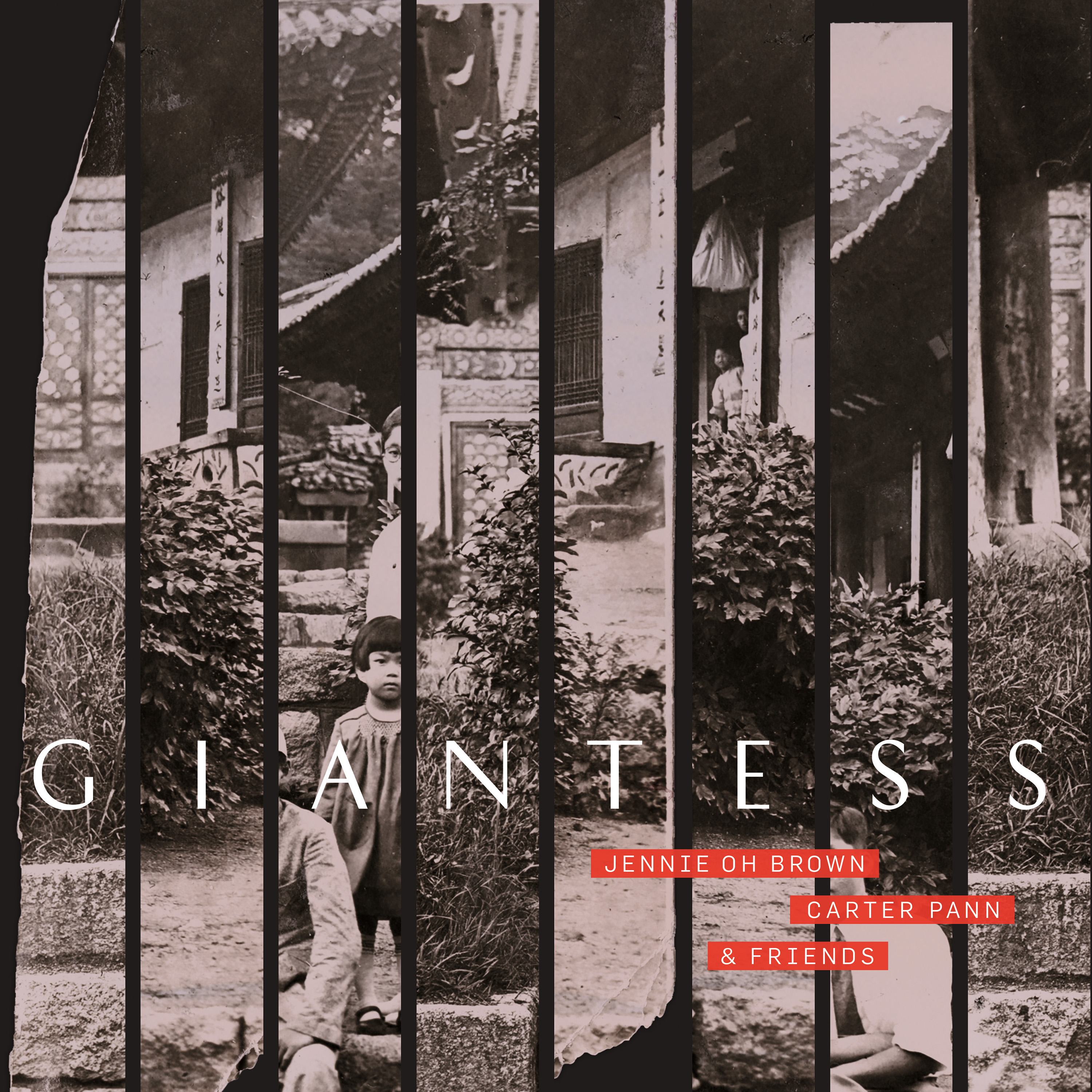Our premiere recording has been met by incredibly generous reviews. Please read below, and take a listen on your favorite platform.
The Heare Ensemble is Jennie Oh Brown on flutes, Jennifer Blyth on piano, and Kurt Fowler on cello, and this is their debut recording – a surprise given the effortless sounding musicianship.
The recording commemorates the 90th birthday of American composer George Crumb. The first piece on the album is Crumb’s Vox Balaenae – Voice of the Whale (1971). Written for “three masked players (electric flute, electric cello, and electric piano,) it begins with the lovely and atmospheric Vocalise, a combination of voice and flute (and voice forced through flute) that sets the tone for the ominously rumbling piano that follows – like approaching thunder. The piece is evocative and flows through mood changes from majestic to playful to foreboding.
Crumb was responding to recordings of whale sounds he’d heard, and the piece is considered revolutionary. In addition to whale sounds, he alludes to the opening theme of Richard Strauss’ Also Sprach Zarathustra, a piece he is said to admire, even as he depicts a natural world without the overt presence of humankind.
In the third movement, the cello becomes a whale’s voice, then perhaps a passing fly, then bounces off the flute. Each of the eight movements explores the concept in sound, with some of th emovements named after geological periods (Proterozoic, Mesozoic, and so on).
Even when the melodies and rhythms bounce off each other and clash, it’s with rich tonal changes and shimmering rhythms that make it compelling. The Heare Ensemble began performing the piece as graduate students at the Eastman School of Music, and have performed it many times since then.
The other pieces on the recording were chosen because of their connections to the ideas and themes of Crumb’s work in various ways.
Narong Prangcharoen‘s Bencharong, the second piece on the release, has five movements, each named after a different colour – Red, Blue and Yellow, including the three primary colours, white and black.
The word itself means “five coloured”, and refers to traditional decoration of Thai pottery. Each movement uses its own set of notes and sounds – such as the naturally vibrant and kinetic Red, and the slower, moody and reflective Blue.
Two shorter pieces, Stacy Garrop‘s Silver Dagger, a riff off an Appalachian folk song, and Carter Pann‘s Melodies for Robert, written for Robert Vincent Jones, a talented flutist who became a physician – albeit one with a deep love of art and music – round off the CD.
This is an album of music that plays with the emotions and offers reflection and contemplation, where the superb talents of the musicians are almost forgotten in the sheer beauty of the music.
Heare Ensemble, Vox, Music of George Crumb, Narong Prangcharoen, Stacy Garrop, Carter Pann
Vox (Innova 040) allows our ears to bask in Modern Chamber Music of a less abstract sort, with a nod to evocative meaning. The Heare Ensemble give us warm and vivacious readings of mostly multi-movement works that hang together well as a kind of expressive whole.
The Heare Ensemble distinguish themselves throughout as an eloquent trio comprising Jennie Oh Brown on flutes, Jennifer Blyth on piano and Kurt Fowler on cello.
The album celebrates George Crumb’s 90th birthday with a mindful yet ebullient performance of his classic 1971 tribute to Humpback whale song, “Vox Balaenae.” The three players are to be masked in performance, their instruments electrified. The Heare Ensemble first performed the work together during their student days at Eastman. Since then they have played it in concert more than 25 times. It is both a sign of their affinity for the music and a bellwether of their intimate mastery of the Crumb style. Along with his “Makrokosmos” series for piano and several other chamber works “Vox Balaenae” is sublime Crumb and a fitting way to celebrate his 90th. Happy birthday, George!
Thai composer Narong Prangcharoen has a well-considered de facto kind of response to the work with his “Bencharong” trio in five movements. It follows the creation sequence of the Thai pottery of that name–which is a rather precarious production with three to eight successive glaze firings, each with a different color. Only after the sequence of stages are properly overcome is the vessel completed. One false move in any of the stages and the pot is discarded. The music has that “making it all count” immediacy to it.
Crumb’s love of Appalachian folk song and his generally melodic vibrancy are celebrated in the final two works, Stacy Garrop’s “Silver Dagger,” which is an effectively lovely reworking of such a folk song, and the Carter Pann “Melodies for Robert,” which sports out-front, engaging melodics commissioned by the family of Robert Vincent Jones in memoriam.
And so ends a program literally brimming over with meaningful music. The Crumb work revels in benchmark poignancy; the three accompanying works stand out as worthwhile and worthy counterparts in this high-watermark program. The Heare Ensemble triumphs. The music wins the day from beginning to end. Hear this, by all means. It reminds us how central Crumb remains in our time, and happily how his legacy is very alive.
Vox (Innova 040) allows our ears to bask in modern chamber music of a less abstract genre, with a nod to an evocative sense. The Heare Ensemble gives us warm and lively readings of mostly multi-movement works that fit well together as a kind of expressive whole.
The Heare Ensemble stands out everywhere as an eloquent trio including Jennie Oh Brown on flutes, Jennifer Blyth on piano and Kurt Fowler on cello.
The album celebrates George Crumb’s 90th birthday with a conscious and bubbling performance from his classic 1971 tribute to the humpback whale song, “Vox Balaenae”. The three players must be masked in the performance, their instruments electrified. The Heare Ensemble first performed the work together during their student days in Eastman. Since then, they have played it in concert more than 25 times. It is both a sign of their affinity for music and a sign of their intimate mastery of the Crumb style. With his series “Makrokosmos” for piano and several other chamber works “Vox Balaenae” is sublime Crumb and an appropriate means to celebrate its 90th. Happy birthday, George!
Thai composer Narong Prangcharoen has a reputation de facto sort of response to work with his trio “Bencharong” in five movements. It follows the sequence of creation of the Thai pottery of this name – which is a rather precarious production with three to eight successive firings of glaze, each with a different color. It is only after the sequence of stages has been correctly overcome that the ship is finished. One wrong move in one of the stages and the pot is discarded. Music has this “immediacy”.
Crumb’s love for the Appalachian folk song and his generally melodic dynamism are celebrated in the last two works, “Silver Dagger” by Stacy Garrop, which is an effective rework of such a folk song, and the “Melodies for Robert “de Carter Pann”, which display in front, engaging melodies dedicated to the memory of his father.
And so ends a program literally overflowing with meaningful music. Crumb’s work delights in a poignant reference; the three accompanying works stand out as valid and worthy counterparts of this high-profile program. The Heare Ensemble triumphs. Music wins the day from start to finish. Listen to this, by all means. It reminds us of how central Crumb remains in our time and fortunately how very alive his legacy is.
Vox
Heare Ensemble
Innova Recordings 040 (innova.mu/albums)
What is a “test of time” measured against the universe’s, or even our planet’s? On the human scale, George Crumb’s Vox Balaenae for three masked players performing on amplified instruments – flute, cello and piano – has stood up well over the half century since its composition. The Heare Ensemble opens with this work, whose theme reminds humans of how tiny their lifespan is measured against that of the Earth. Even without the blue ambient lighting Crumb indicated for live performance, the music draws us into the depths: meditation and wonder, awe and exhilaration. Like Messaien’s Quartet for the End of Time, Vox Balaenae (voice of the whale) is a work of praise, threaded through with references to time and timelessness; the object of Crumb’s louanges, unlike Messaien, is the world itself, and his angelic voice is that of the whale. The performances are flawless, and the recording quality excellent; Vox Balaenae is a timeless masterpiece.
Next, Bencharong by Narong Prangcharoen depicts the five colours of classic Thai ceramics. The movements are brief, and while the composer makes no overt claim that he experiences synaesthesia, the musical colours are as distinct as the visual ones.
Silver Dagger, by Stacy Garrop, references an American folk song she researched and found to have three distinct variants and outcomes, almost a post-modern Romeo and Juliet. Like Berio in his folk song settings, Garrop is content to find mystery and beauty in the simplicity and power of the original. It’s beautiful Americana.
Melodies for Robert by Carter Pann is a celebration in memoriam of “an American war hero,” to quote the liner notes. There are two movements: Sing and Listen. I don’t find myself able to listen to them following the rest of the disc. I haven’t much room left for dessert, especially not one so sweet.
George Crumb , one of the most important composers on the American contemporary scene, opens this interesting CD with his original composition VOX BALENAE. Inspired by the fascinating and enchanting song of the whales, the song is written for three ‘masked’ performers respectively engaged in the electronic flute, electronic cello and electronic piano. An abstract, ethereal and floating work, just like whales suspended in the ocean, full of effects that now imitate the hiss of their voice, now the song of the seagulls, reproducing in the background a liquid and changeable atmosphere that tells the marine abysses. Starting from a main theme, the author composes five complex variations on it, then returns to the final epilogue by re-presenting the initial melody. The other compositions presented in this work are, each for its own peculiarity, equally interesting and of remarkable workmanship. Bencharongby Narong Prangcharoen, for example, musically describes in a very original way the decorations of the typical Thai porcelain vases starting from the beautiful basic colors that compose them. SILVER DAGGER by Stacy Garrop, develops in a contemporary and eclectic way a sweet folksong of the Appalachian mountains, while MELODIES FOR ROBERT by Carter Pann is an intimate song dedicated to the memory of Robert Vincent Jones, musician and war hero. The quality of execution and interpretation by the Heare Ensemble is truly remarkable and gives a special and intense touch to all the compositions.
Rating: 8

Heare Ensemble: VOX
Innova
A natural companion to Jennie Oh Brown’s recent solo album Giantess is VOX, the premiere recording by the Heare Ensemble. Not only does the flutist appear alongside pianist Jennifer Blyth and cellist Kurt Fowler in the group, both Innova releases include renditions of Carter Pann’s Melodies for Robert. However, the primary work on VOX is arguably George Crumb’s eight-part Vox Balaenae (Voice of the Whale), an environmentally conscious piece the musicians first performed as graduate students at the Eastman School of Music and have since presented more than twenty-five times. However much the three pieces accompanying it might at first glance seem unrelated, they were chosen, in part, for overlapping thematically with ideas explored in Vox Balaenae.
Without question, Crumb’s 1971 creation registers strongly. Emblematic of the composer’s style, Vox Balaenae was created after he was exposed to hydrophone recordings made by marine biologists in the ‘60s that illustrated the communicative power of whale songs. Initially designed to be presented by masked performers in a blue-lit concert setting that would mimic the ocean’s depths, the performance loses that theatrical dimension, obviously, in the recorded version. Little else is sacrificed, however, in the realization, as the trio carefully follows Crumb’s guidelines in evoking the sounds of whales, seagulls, and nature. Whereas a primal wildness establishes itself early in the vocalizations that accompany Brown’s flute phrases in “Vocalise (…for the beginning of time),” Fowler’s cello glissandos and Blyth’s inner piano textures suggest whale communications in “Archeozoic (Variation I).” An Eastern quality also surfaces at times, specifically in the sitar-like twang generated by Fowler and the generally meditative tone of some movements. Passages of extreme quiet alternate with louder ones, and listeners familiar with Crumb’s music would no doubt identify “Mesozoic (Variation IV)” as his the moment those fortissimo clusters dazzle the senses. Listening to Vox Balaenae in 2020, one can’t help but regard Crumb as prescient for anticipating environmentally related works by figures such as John Luther Adams and Ingram Marshall.
Narong Prangcharoen’s Bencharong (2002) follows, its title a reference to Thai porcelain that’s typically created using three to eight colours and often handed out on special occasions. Each of the work’s five short movements represents the composer’s attempt to distill into musical form the character of each colour. Though Prangcharoen’s work is less audacious than Crumb’s in the world evoked, it’s nevertheless an engaging piece executed with passion by the trio; it also effectively captures the high level of connectedness the three demonstrate in their performances. Mood contrasts are central to Prangcharoen’s stylistically diverse setting, with the material ranging from the high-spirited “Red” and sparkling “Yellow” to the introspective “White” and macabre “Black.”
Stacy Garrop drew for her single-movement Silver Dagger (2010) from an Appalachian folk song of the same name whose lyrics offer a variation on the Romeo and Juliet theme when young lovers end their lives with the titular instrument. A plaintive, somewhat pastoral folk melody emerges at the outset to connect the piece to the Appalachian locale, and thereafter the material advances through dark, brooding passages until an elegiac reprise of the opening theme imposes a satisfying resolution. Whereas Crumb’s Vox Balaenae focuses on non-human species, Pann’s Melodies for Robert (2017) was written as an affectionate homage to the late Robert Vincent Jones, an American war hero and respected Chicago-area physician. Celebratory in tone, the work begins with “Sing,” a stately, lyrical exercise elevated by the sensitive interplay between the three players, and concludes with “Listen,” as affecting in its heartfelt expressivity. As much as Vox Balaenae is, as stated, the forty-five-minute recording’s key work, the trio was smart to end it with Pann’s to enable the listener to leave VOX buoyed by its rapturous spirit and humanistic tone.
May 2020
Jennie Oh Brown plays a variety of flutes, teaming with pianist Jennifer Blyth and cellist Kurt Fowler for interpretations of material by George Crumb, Narong Prangcharoen, Stacy Garrop and Carter Pann. Crumb’s eight movement “Vox Balaenae” is filled with dark piano musings, long shadows from flute and thoughtful strings. The five part “Bencharong” by Narong Prangcharoen mixes floating dreams , modern classical harmonics and ominous stark atmospheres reminiscent of vintage films noir. Blyth’s piano is sublime and Debussy-esque for the two “Melodies For Robert” with the entire album feeling like a walk through a musical Impressionistic museum.




